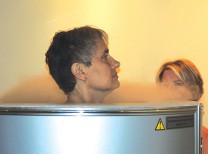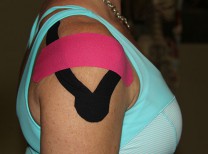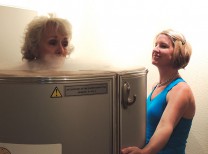Pain is a universal experience of the human condition. It has a protective function to notify us of damage occurring to the body so we may make changes and avoid further injury. In many cases, pain may continue beyond the usual tissue healing time and become a prolonged excruciating life-altering problem.
We are in the middle of the largest expansion of Medicare patients because of the baby boom after World War II. Thirty-eight million Americans were on Medicare in 2010; by 2020 there will be more than 82 million. Americans have a life expectancy of nearly 80 years; chronic illnesses and pain will be become more prevalent. Currently 100 million Americans suffer from chronic pain, and 66 million are partially or totally disabled. 27 million have back pain, 45 million have arthritis, 26 million have diabetes, and 12 million have cancer.
While some people may have total body pain the majority have pain that is localized to a limited area of the body. Correct early evaluation and diagnosis may bring relief with simple measures such as anti-inflammatory medications, and physical therapy or chiropractic care.
When these measures are not sufficient, an evaluation by a board certified pain management physician may help avoid the long-term disability that comes with chronic pain. Beyond their initial board certification in anesthesiology, physical medicine, orthopedics, and oncology these physicians have additional qualifications for evaluating pain.
Pain management services are particularly effective in treatment of localized pain problems where a specific nerve block with steroids or local anesthetics may be applied for diagnostic and therapeutic effects. Beyond the application of steroids and local anesthetics, some nerves can be treated with heat, cold or chemicals to destroy the nerves for a period of months to years. These treatments have been practiced for a long time but are now being used more often as these specialized techniques become more widely available.
Spinal cord stimulation allows for modulation of nerve signals to replace the pain signals with a pleasant stimulation. The next generation of this stimulation will not replace the pain signals but just eliminate them without any perception of the stimulation.
Less invasive treatment methods are continuing to evolve. Kyphoplasty to treat broken bones of the spinal column are 92% effective in alleviating pain. Recently the new MILD procedure (minimally invasive lumbar decompression) allows the patient to be awake while ligaments in the spinal canal are thinned out to relieve pressure on the nerves. This procedure requires minimal or no sedation and no recovery time.
Drug therapy has also been changing. After liberalization of opioid therapy in the 1990s there is now a change in policy with an emphasis on avoiding narcotics. Much of this concern comes from increases in people overdosing from prescription narcotics. Localized pain can be effectively treated with specific targeted therapy, thus avoiding the debilitating side effects of narcotics. However, if narcotic treatment is necessary (such as for whole body pain), new technologies are making these medications safer with abuse-deterrent manufacturing processes.
Roland Reinhart, MD is double board certified in anesthesiology and pain management and can be reached at (760) 341.2360. He is also a member of the Desert Doctors network. For more information visit DesertDoctors.org or call (760) 232.4646.















































Comments (0)